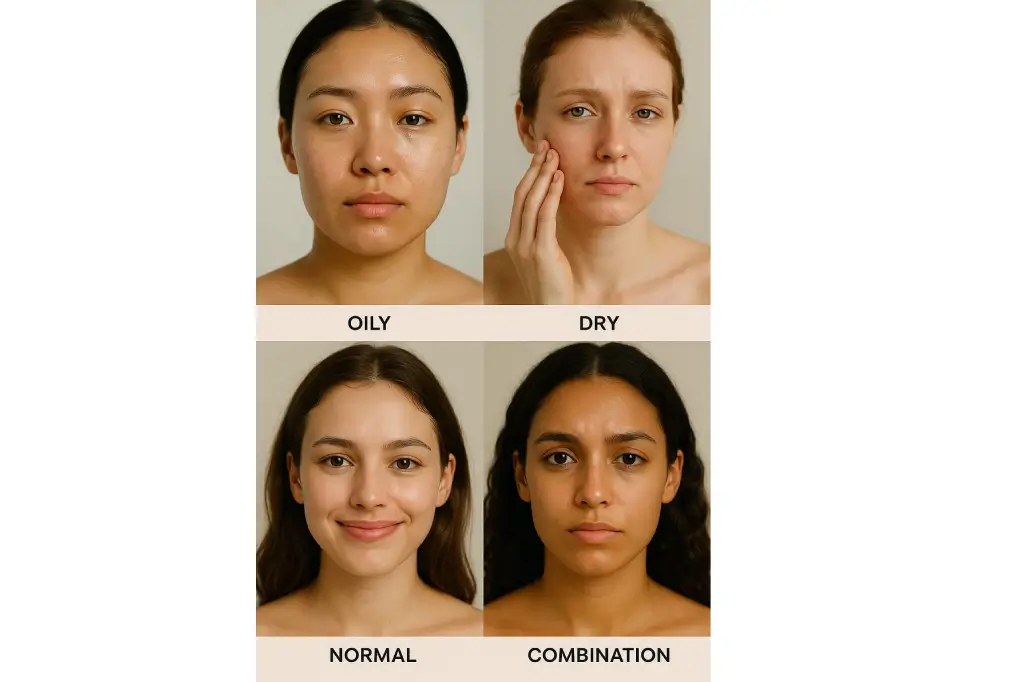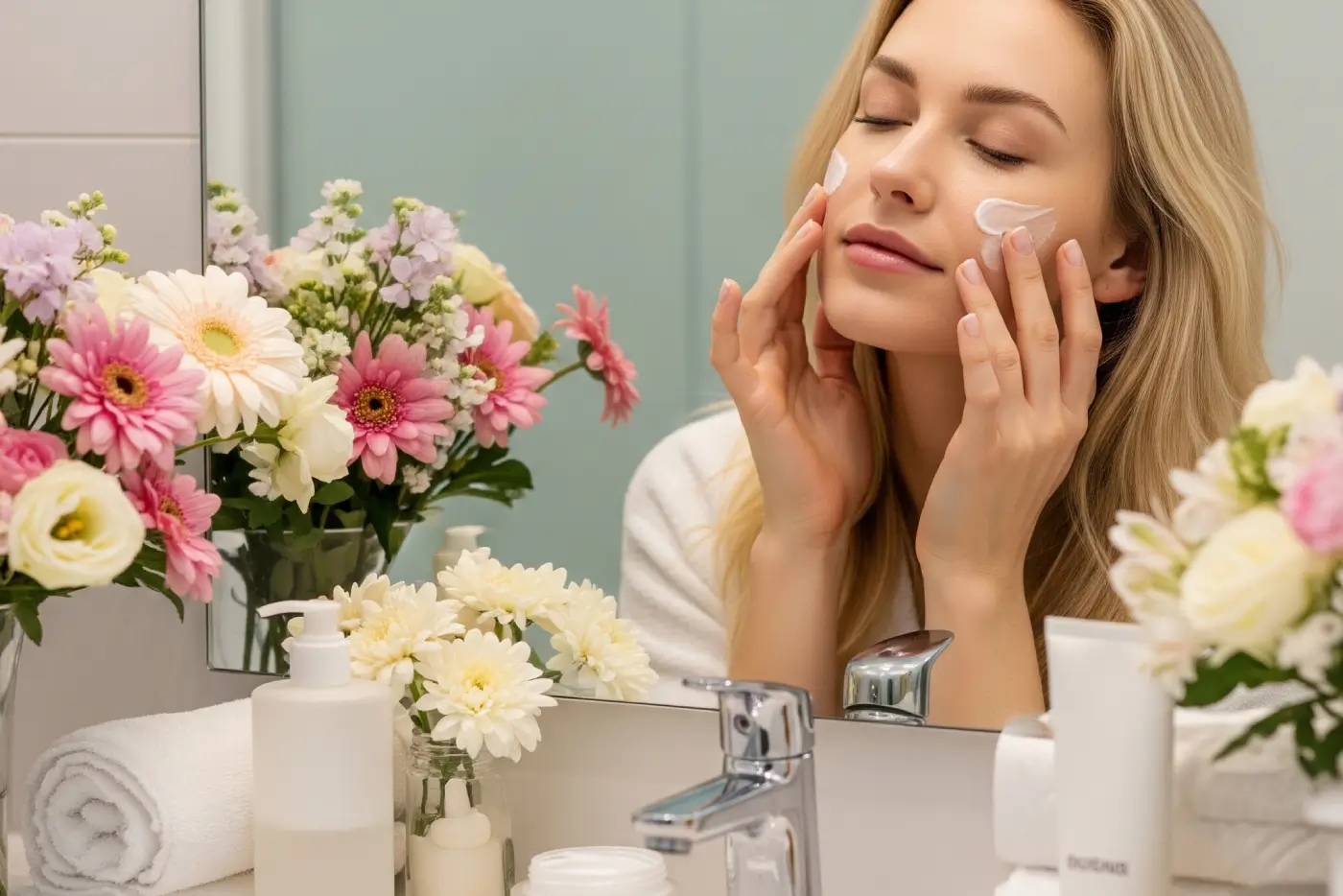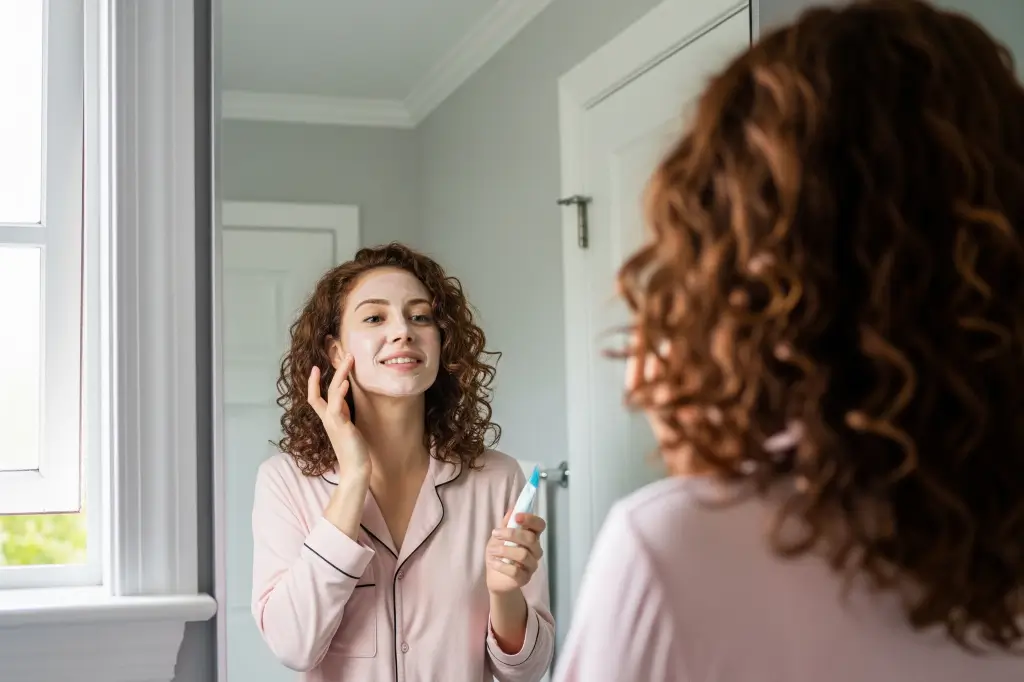Best Night Time Skin Care Routine for Glowing Skin

Contents
Having a proper night time skin care routine is very important if you want healthy, glowing skin. Taking care of your skin is not just about what you do during the day. In fact, your night time skin care routine plays a very important role in maintaining healthy, clear, and glowing skin.
After a long day filled with pollution, sweat, sun exposure, and makeup, your skin needs time to repair and relax. That is where a good night routine helps. A simple, consistent, and effective night routine can do wonders for your skin overnight.
Why Night Time Skin Care Routine Matters
You might be wondering, “Why is night time skin care routine so special for my skin?” Good question! During the day, your skin is busy protecting itself from the environment. It acts like a shield. But at night, when you are sleeping peacefully, your skin switches roles. It goes from ‘protection mode’ to ‘repair and regeneration mode.’
Here is what happens while you snooze:
• Cell Renewal: This is the most exciting part! At night, your skin cells work overtime to repair themselves and create new, healthy cells. This process helps to replace old, damaged cells with fresh ones, which is key for a youthful and radiant complexion.
• Increased Blood Flow: When you lie down, blood flow to your skin increases. This brings more oxygen and nutrients to your skin cells, which are vital for their repair and renewal.
• Better Absorption: Your skin is more receptive to absorbing active ingredients from your skincare products at night. This means that your serums, creams, and treatments work more effectively, penetrating deeper into the skin to deliver their benefits.
• Rest and Relaxation: Your entire body, including your skin, benefits from rest. Stress can often show up on your skin as breakouts, dullness, or fine lines. A good night’s sleep, combined with a relaxing night skin care routine, helps reduce stress and lets your skin recover.
• Collagen Production: Collagen is like the building block of your skin, keeping it firm and bouncy. While you sleep, your body ramps up collagen production, which helps reduce wrinkles and makes your skin look smoother.
Step-by-Step Night Skin Care Routine Steps

Now, let’s get to the practical part: what exactly should you do for your night routine? Remember, consistency is more important than complicated steps. We will outline the general steps, and you can adjust them based on your skin type and concerns.
Step 1: Double Cleansing
Throughout the day, our skin accumulates makeup, sunscreen, dust, pollution, and excess oil. A single wash often is not enough to remove all of this thoroughly. Double cleansing means using two types of cleansers:
First Cleanse (Oil-Based): Start with an oil cleanser, cleansing balm, or micellar water. These are excellent for breaking down makeup, sunscreen, and the oily impurities on your skin without stripping it. Take a small amount and gently massage it onto your dry face for a minute or two, allowing it to dissolve everything. Then, emulsify with a little water until it turns milky, and rinse thoroughly.
• Why it is important: Water alone cannot effectively remove oil-based impurities. This step ensures all traces of the day are lifted away.
Second Cleanse (Water-Based): Follow up with a gentle, foaming, or gel-based cleanser suitable for your skin type. This step cleanses your pores more deeply, removing any leftover residue from the first cleanse and water-based impurities like sweat and dirt. Lather a small amount with water, gently massage, and rinse well. Pat your face dry with a clean, soft towel.
• Why it is important: This ensures your skin is absolutely clean, ready to absorb the goodness of the products you will apply next. For those with oily or acne-prone skin, this step is vital to prevent clogged pores.
Step 2: Toning
After cleansing, a toner helps to balance your skin’s pH level, which can sometimes be disturbed by cleansing. It also prepares your skin to better absorb the products you will apply next.
• How to do it: Pour a few drops of toner onto a cotton pad and gently swipe it across your face and neck. Alternatively, you can pour a small amount into your palms and gently pat it onto your skin.
Choose wisely: If you have oily skin, look for toners with ingredients like salicylic acid or witch hazel. For dry or sensitive skin, choose hydrating toners with ingredients like hyaluronic acid or rose water. Avoid toners with high alcohol content, as they can be drying.
Step 3: Treating with Serums
This is where you bring in the “big guns” to address specific skin concerns. Serums are concentrated formulas designed to deliver powerful active ingredients deep into your skin.
• How to do it: Apply a few drops of your chosen serum onto your face and gently pat it in until absorbed.
Popular Night Serums:
• Hyaluronic Acid Serum: Excellent for all skin types, especially dry or dehydrated skin. It draws moisture into the skin, making it plump and supple.
• Retinol/Retinoid Serum: A powerhouse for anti-aging, acne, and improving skin texture. Start with a low concentration a few times a week if you are new to it, as it can be strong. Always use sunscreen the next morning when using retinol.
• Niacinamide Serum: Great for reducing redness, minimizing pores, and evening out skin tone. Suitable for most skin types.
• Vitamin C Serum: While often used in the morning for antioxidant protection, some prefer to use a stable vitamin C derivative at night for brightening and collagen support.
• Acne-Treating Serums: If you have breakouts, look for serums with salicylic acid or benzoyl peroxide (use with caution, as it can be drying).
Pro Tip: You can layer serums if you have multiple concerns, but remember to apply them from thinnest to thickest consistency.
Step 4: Eye Cream
The skin around your eyes is much thinner and more delicate than the rest of your face, making it prone to showing signs of aging, puffiness, and dark circles first. An eye cream helps to hydrate, nourish, and protect this area.
• How to do it: Take a tiny amount (a pea-sized dot for both eyes) and gently tap it around your orbital bone (the bone around your eye) using your ring finger. Do not rub or pull the skin.
• Why it is important: Regular use of eye cream can help keep the eye area moisturized, reduce the appearance of fine lines, and address specific concerns like dark circles or puffiness.
Step 5: Moisturizing
Moisturizer is a non-negotiable step in any night time skin care routine. It locks in all the beneficial ingredients you apply and creates a barrier to prevent moisture loss while you sleep.
• How to do it: Take a generous amount of night cream or moisturizer and gently massage it onto your face and neck using upward strokes.
• Choose wisely:
o Dry Skin: Look for rich, thick creams with ingredients like ceramides, hyaluronic acid, shea butter, or glycerin.
o Oily/Combination Skin: Opt for lighter, gel-based, or non-comedogenic (will not clog pores) moisturizers.
o Acne-Prone Skin: Choose oil-free and non-comedogenic formulations.
o Mature Skin: Look for moisturizers with anti-aging ingredients like peptides, antioxidants, or retinol (if not using a separate retinol serum).
• Remember: Your skin needs hydration regardless of its type. Even oily skin can be dehydrated!
Step 6: Lip Balm
Our lips can also get dry and chapped, especially after a long day. A good lip balm or lip mask applied at night can work wonders.
• How to do it: Apply a thick layer of a hydrating lip balm or a dedicated lip sleeping mask before bed.
• Why it is important: Waking up to soft, plump lips makes a big difference!
Common Mistakes to Avoid in Your Night Routine
Even when people follow a night time skin care routine, they often make small mistakes that reduce its effectiveness.
• Sleeping with makeup on—Always clean your face before sleeping.
• Using too many products—More is not always better. Use what suits your skin.
• Not using moisturizer—Skipping moisturizer can lead to dry, damaged skin.
• Changing products too often—Give time for products to work (at least 2–3 weeks).
• Using harsh scrubs daily—Over-exfoliation can damage your skin.
Final Tips for the Best Night Routine
• Always follow your night time skin care routine before sleeping.
• Drink enough water to keep your skin hydrated from within.
• Get 7-8 hours of sleep for healthy skin.
• Be consistent—results take time, so don’t skip your night skin care routine steps.
Final Thoughts
Following a regular night time skin care routine is not about using expensive products. It is about being kind to your skin and giving it the care it needs to heal and glow. With the right steps, good-quality products, and a little patience, your skin will thank you every morning.
Remember, the key is consistency. Skipping your night routine once in a while will not harm you, but making it a daily habit will bring long-lasting results. No matter your age or skin type, a good night skin care routine is the foundation of clear, soft, and youthful skin.
So tonight, before you sleep, take 10 minutes and give your skin the love it deserves.






